London Stadium (Olympic Stadium)
| Capacity | 62 500 |
|---|---|
| Country | England |
| City | London |
| Clubs | West Ham United FC |
| Inauguration | 05/05/2012 |
| Construction | 2007–2011 |
| Renovations | 2014–2016 |
| Cost | £ 486 million (2012), £ 323 million (2016) |
| Design | Populous, Buro Happold |
| Contractor | Sir Robert McAlpine (2012), Balfour Beatty (2016) |
| Address | 103-113 Marshgate Ln, Stratford, London, United Kingdom |
Advertisement
London Stadium – stadium description
Why was London Stadium built?
London Stadium was built for the 2012 Summer Olympic and Paralympic Games, serving as an athletics venue and the site of the opening and closing ceremonies. The United Kingdom had bid for the Games three times between 1992 and 2000, including unsuccessful bids from Manchester and Birmingham. The International Olympic Committee (IOC) stated that if the UK was serious about hosting the Games, London’s proposal would be considered.
In 1997, the British Olympic Committee appointed David Luckes to prepare a feasibility study for hosting the Games. By 2000, two location proposals were developed: one in west London around Wembley Stadium, and the other in east London – from Isle of Dogs through Stratford to the Lower Lee Valley. Ultimately, east London was chosen, allowing for the creation of a full Olympic Park and the regeneration of neglected urban areas.
Although other locations, such as Picketts Lock, were initially considered, strategic decisions and the need to revitalize east London determined the stadium’s construction in Stratford. The project was approved by the UK government in 2003, submitted to the IOC in 2004, and in July 2005, London officially secured the right to host the 2012 Summer Olympics.
How did the construction works for London Stadium progress?
During London’s bid, promotional materials showed a stadium with a roof wrapping around the venue like muscles supporting the body.
The government preferred an athletics stadium design, which after the Games would be partially dismantled, leaving the lower tier as a permanent athletics facility, replacing the Crystal Palace National Sports Centre.
On 13 October 2006, the London Organising Committee of the Olympic and Paralympic Games (LOCOG) selected Sir Robert McAlpine and Populous to negotiate a design-and-build contract, after no other company met the tender requirements. The stadium design was officially presented on 7 November 2007.
The design received mixed reactions – ranging from magnificent
to the critical pudding bowl.
The stadium was promoted as an example of “sustainable development,” though some critics questioned its aesthetic value and status as a national icon compared to Beijing National Stadium. The simplicity and functionality were praised, while the visual impact and “wow factor” were seen as limited.
Despite the controversy, the stadium was recognized as a model of economical and functional design, costing £486 million. London Stadium was nominated for the Stirling Prize in 2012 but ultimately lost to the Sainsbury Laboratory at the University of Cambridge.
How was London Stadium constructed?
Construction began in May 2008, after excavating the stadium bowl and clearing the site. The main stadium was completed in March 2011, on schedule and below budget, and the athletics track was installed in October 2011. The athletics arena was built with soft clay, and permanent stands for 25,000 spectators were made from concrete rakers.
The natural slope of the terrain was used in the design, with warm-up and changing areas partially underground. Spectators entered at podium level, aligned with the top of the permanent stands. A lightweight, removable upper tier made of steel and precast concrete was installed above the lower bowl, accommodating an additional 55,000 spectators.
The lower tier used low-CO₂ concrete, producing 40% less carbon than traditional concrete, on foundations supported by 5,000 piles up to 20 m deep. The upper tier measured 315 × 256 m, 60 m high, and used just 10,700 tons of steel – less than a quarter of that used in Beijing National Stadium. High-strength pipes from North Sea gas pipelines and recycled granite were also used, with most materials transported by rail and barges.
The stadium roof, initially scrapped in 2010, was reinstated in 2011 to minimize wind gusts. The polyester and polyethylene roof, funded by Dow Chemical, measured 900 m long and 20 m high, attached to tension cables. The roof covered two-thirds of the stands, including 14 lighting towers with 532 lamps of 2 kW each. Lights were switched on in December 2010 by Prime Minister David Cameron and Mayor Boris Johnson. During the Games, towers were additionally equipped with ceremony lighting and four large temporary video screens. South of the Greenway, a temporary athletics warm-up track was built specifically for the 2012 Olympics.
What did the original London Stadium look like?
The stadium had a nine-lane, 400 m Mondo athletics track. Turf came from Scunthorpe and was a mix of perennial ryegrass, meadow fescue, and bluegrass seed, installed in 360 rolls in March 2011. The track was made by Italian company Mondo (Mondotrack FTX model) – 13.5 mm thick, two layers of vulcanized rubber, with a diamond-cell shock-absorbing underlay allowing flexible deformation in all directions.
The stadium had 80,000 seats arranged in a black-and-white fragments
motif, matching LOCOG’s London 2012 visual identity. Stand lines focused on the track finish line. Seats were manufactured in Luton and installed from May to December 2010.
During the Games, stands were equipped with a Tait Technologies lighting system enabling video content across the stadium (Landscape video
), with 70,500 individual panels, each with 9 LED pixels, centrally controlled.
When was London Stadium inaugurated?
The stadium inauguration took place on 27 July 2012 during the opening ceremony of the Summer Olympics. The show combined history, culture, and modern technology, with giant LED screens, lighting effects, and fireworks. The presentation highlighted British history, culture, and music, including performances by Paul McCartney, industrial and literary scenes, and pop culture. Delegations marched and the Olympic flame was lit. The ceremony was positively received and recognized as one of the most creative Olympic openings in history.
How did the post-Olympic redevelopment of London Stadium proceed?
The reopening was initially planned for 2014, but in November 2012, Dennis Hone (LLDC CEO) revealed it was postponed to August 2015. The redevelopment was overseen by E20 LLP, transforming the stadium into the UK’s only venue with UEFA Category 4 and World Athletics Category 1, seating 66,000 spectators. West Ham United contributed £15 million, Newham Council £40 million, and the rest came from LLDC and the UK government. The redevelopment included a new 45,000 m² roof, sponsor areas, toilets, concessions, and retractable stands.
Work began on 13 August 2013 by removing 25,000 seats and the pitch. The track was covered with a 75-cm layer of recycled concrete. In November 2013, 14 lighting panels were dismantled as part of the £200 million redevelopment. Installation of 14 new towers began in March 2015; each was 18 m high, weighed 45 tons, and was suspended 30 m above the pitch. A steel structure surrounding the stadium was completed, containing 96 gates, concessions, and toilets.
In 2024, 6,500 m² of solar panels were installed on the roof as part of the LLDC Solar Membrane project, funded by the Mayor of London’s Green Finance Fund at £4.35 million, allowing the stadium to generate energy for major events.
In May 2016, the original Mondotrack FTX track was replaced with a new Mondotrack/WS surface. The pitch was extended at the ends for rugby, and post-Olympics a hybrid Desso GrassMaster turf (105 × 68 m) with heating was installed.
The original black-and-white seats were replaced with white, blue, and claret patterns, adding West Ham branding on the East Kop Stand and crossed hammers on the lower tiers. In 2016, the stadium became West Ham’s home, adding club colors and jersey displays, and on 23 June, a club shop and café opened.
In April 2019, a claret pitch surround was installed, ending disputes between the club and LLDC. The East Stand was named after Billy Bonds, and in 2021 a West Ham United’s European Champions
monument was installed. In February 2020, new lower stands were announced, and in March 2020 a sensory room for fans opened. On 6 April 2022, stadium capacity was increased to 62,500 for football matches, with West Lower Stand reconfiguration raising total capacity to 68,013.
How was London Stadium used after the Olympics?
Post-Games, the stadium was intended as an athletics venue for 25,000–30,000 spectators, with a training, scientific, and medical center. In 2006, the need for a world-class athletics stadium was emphasized, as Crystal Palace required major investment, and Wembley was unsuitable. Football or rugby club usage was considered, provided athletics events were preserved.
Before the Games were awarded, West Ham United or Tottenham Hotspur were considered as tenants, but Mayor Ken Livingstone initially excluded football, planning a 25,000-seat capacity. Later, negotiations allowed West Ham use, and Tottenham withdrew due to the track. Other potential stadium locations included Thames Ironworks and the West Ham station site.
In 2009, it was warned that the stadium might be financially unviable, and the decision to reduce capacity was considered flawed. In 2010, Olympic Park Legacy Company (OPLC) was formed to select a post-Games tenant, with criteria for cost-effective, flexible, and symbolic use. After tendering, Tottenham with AEG and West Ham with Newham Council were selected for negotiation. Tottenham wanted football only; West Ham also athletics and other events.
Ultimately, West Ham was selected in 2011, but the decision was annulled for legal reasons. A new process began in 2011, retaining the track and 60,000 capacity. In February 2012, 16 bidders applied; West Ham was chosen as the main tenant.
In December 2012, LLDC announced West Ham as the preferred tenant, with a 99-year lease and £2.5 million annual rent, retaining community and sporting access. The club used the stadium from the 2016–17 season, and UK Athletics has access annually from late June to late July. Legal disputes over lease terms were settled with agreements and adjustments. Since then, the stadium has primarily hosted West Ham while maintaining athletics and other sports functions.
What problems occurred at London Stadium and how were they resolved?
Issues mainly involved event organization and spectator safety. During matches such as Samoa vs Barbarians and West Ham vs Bournemouth, complaints were made about lack of Wi-Fi, alcohol, long queues, poor visibility, and seat allocation errors. The stadium’s design was also criticized for placing fans too far from the pitch.
At the start of the 2016/17 season, West Ham matches were disrupted by fan incidents, e.g., against Bournemouth, Watford, and Middlesbrough. The club requested E20 to ensure police presence, but police cited insufficient radio systems. Further issues arose during matches vs Sunderland and Chelsea, despite increased security.
Permanent safety measures were implemented: increased distance between rival fans, reinforced barriers, better segregation in stadium and on the Island, and stewards equipped with cameras. In March 2018, protests against West Ham owner David Sullivan occurred during the Burnley match, including pitch invasions and Sullivan being hit in the head by a coin. Additional board member protection measures were implemented at £60,000.
In June 2018, West Ham was fined by the FA for incidents vs Burnley, and in January 2019, fined £100,000. Investigations revealed serious failings by LS185, the stadium operator, including insufficient stewards, poor training, and inadequate response to pitch invasions. The club sought to share the fine with the company. Problems were resolved by infrastructure improvements, stronger security, better organization, and staff training.
What sporting events have taken place at London Stadium?
London Stadium hosted numerous sporting events. In 2012, it hosted the Olympic and Paralympic Games, including opening and closing ceremonies and athletics events, with many world and Olympic records set. Post-Games, it hosted the 2017 World Athletics Championships, London Anniversary Games, IPC Grand Prix, and road races such as the Great Newham London Run and Athletics World Cup.
In football, the stadium has been West Ham United’s home since the 2016–17 season, and has also hosted National League play-off matches, international fixtures, and charity events such as Soccer Aid and the Sidemen Charity Match.
In baseball, London Stadium hosted the MLB London Series featuring teams such as the Boston Red Sox, New York Yankees, Chicago Cubs, and St. Louis Cardinals.
In motorsport, it hosted the Race of Champions and Monster Jam, and in 2025 it will host the FIM World Supercross Championship.
Rugby league events included England vs New Zealand and Australia matches, as well as the Four Nations tournament. Rugby union events included the 2015 Rugby World Cup group stage and bronze medal match. Premiership Rugby appeared in 2018 when Saracens played Harlequins. London Stadium functions as a multi-purpose venue for athletics, football, baseball, motorsport, and rugby at both national and international levels.
What non-sporting events have taken place at London Stadium?
Since 2016, London Stadium has also hosted numerous non-sporting events, primarily concerts. The first post-Olympics concert was by the Australian band AC/DC in June 2016 as part of their Rock or Bust World Tour.
Subsequent performers included Depeche Mode, Guns N’ Roses, Robbie Williams, The Rolling Stones, Florence and the Machine, Beyoncé & Jay-Z, Foo Fighters, Green Day, Red Hot Chili Peppers, A$AP Rocky, Burna Boy, The Weeknd, Courtney Barnett, Iron Maiden, Metallica, and Pantera.,/p>
These performances included world tours and one-off shows, attracting audiences from tens of thousands up to over 120,000, including a record-breaking attendance for Beyoncé & Jay-Z.
How London Stadium compares to other Premier League venues?
Advertisement
Pictures

12.08.2019 © Queen Elizabeth Park 
12.08.2019 © Queen Elizabeth Park 
12.08.2019 © Queen Elizabeth Park 
12.08.2019 © Queen Elizabeth Park 
12.08.2019 © Queen Elizabeth Park 
12.08.2019 © Queen Elizabeth Park 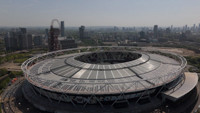
17.07.2025 © London Stadium 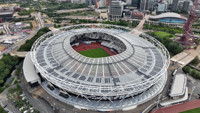
17.07.2025 © London Stadium 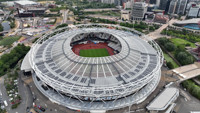
17.07.2025 © London Stadium 
09.12.2016 © Alan Batham 
09.12.2016 © Alan Batham 
09.01.2017 © sbally1 
09.01.2017 © sbally1 
09.01.2017 © sbally1 
24.02.2017 © David Holt 
24.02.2017 © David Holt 
24.02.2017 © David Holt 
07.08.2016 © Stephan Hoogerwaard 
07.08.2016 © Stephan Hoogerwaard 
07.08.2016 © Stephan Hoogerwaard 
07.08.2016 © Stephan Hoogerwaard 
20.10.2017 © Adam Somlo 
22.04.2018 © Adam Somlo 
20.10.2017 © Adam Somlo 
07.08.2016 © Stephan Hoogerwaard 
07.08.2016 © Stephan Hoogerwaard 
07.08.2016 © Stephan Hoogerwaard 
07.08.2016 © Stephan Hoogerwaard 
07.08.2016 © Stephan Hoogerwaard 
07.08.2016 © Stephan Hoogerwaard 
07.08.2016 © Stephan Hoogerwaard 
07.08.2016 © TheBallisRound.co.uk 
07.08.2016 © TheBallisRound.co.uk 
07.08.2016 © TheBallisRound.co.uk 
07.08.2016 © TheBallisRound.co.uk 
23.07.2016 © John Buckley 
29.08.2015 © TheBallisRound.co.uk 
29.08.2015 © TheBallisRound.co.uk 
29.08.2015 © TheBallisRound.co.uk 
29.08.2015 © TheBallisRound.co.uk 
07.10.2015 © Justin Geyser 
04.10.2015 © Andrea Pucci 
29.08.2015 © TheBallisRound.co.uk 
07.10.2015 © TheBallisRound.co.uk 
07.10.2015 © David Roberts (cc: by) 
20.10.2017 © Adam Somlo 
20.10.2017 © Adam Somlo 
20.10.2017 © Adam Somlo 
20.10.2017 © Adam Somlo 
20.10.2017 © Adam Somlo 
20.10.2017 © Adam Somlo 
20.10.2017 © Adam Somlo 
20.10.2017 © Adam Somlo 
20.10.2017 © Adam Somlo 
2012 © IAKS 
06.2011 © Frans Zwart (cc: by-nc-nd) 
21.07.2012 © Martin Deutsch (cc: by-nc-nd) 
25.07.2012 © Duncan Rawlinson (cc: by-sa) 
19.07.2012 © Anne Roberts (cc: by-nc-sa) 
26.07.2012 © Duncan Rawlinson (cc: by-sa) 
25.07.2012 © almost witty (cc: by-sa) 
12.04.2012 © Anne Roberts (cc: by-nc-sa) 
2012 © IAKS
2012:
Related news
2025
-
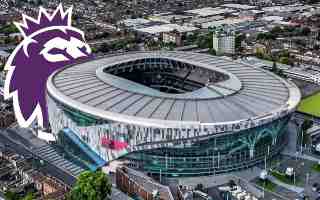
England: How the 21st century shaped the Premier League with 8 new stadiums
Although the Premier League is mainly associated with historic stadiums with over a century of tradition, the 21st century has also brought several modern venues. In this article, we will go through all the stadiums that have been built in the last 25 years.
-
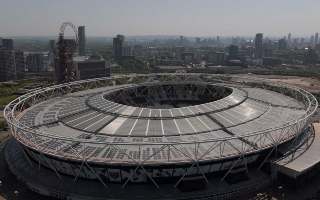
England: London Stadium – West Ham’s blessing and curse
London Stadium, home of West Ham United, was supposed to symbolize a new era for the club. Instead, it has become its biggest challenge. While the team benefits from low rent and high capacity, the lack of control over the venue limits financial and investment opportunities – and, by extension, the club’s overall valuation.
-
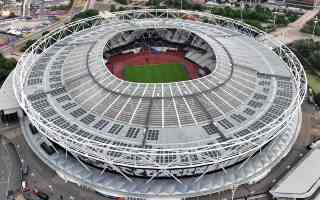
England: Athletics over Premier League at West Ham’s stadium
Following the success of 2012 and 2017, London is aiming to host the 2029 World Athletics Championships. This could force West Ham to temporarily vacate their stadium in the middle of the Premier League season.
-
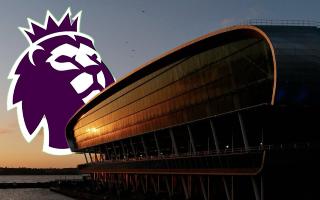
England: Premier League's 50,000+ seat stadiums after Everton's new ground opens
The Premier League is home to some of football’s biggest stages, where fans create unforgettable atmospheres. Everton’s new stadium joins the ranks of venues with 50,000+ seats. Discover the full list of English football giants.
-
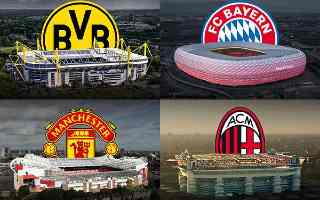
UEFA: 2. Bundesliga ahead of Arsenal and Atletico! Surprising attendance figures in Europe
Who attracts the biggest crowds to their stands, and who unexpectedly falls short of the numbers needed to make the top ranks? The latest attendance report for European leagues in the 2023/24 season provides the answers.
-
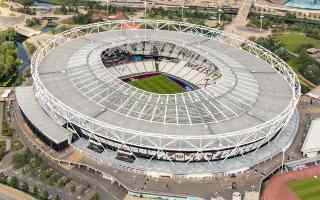
England: West Ham win legal dispute over London Stadium
A legal dispute between West Ham United and E20 Stadium LLP over a fee related to Czech billionaire Daniel Kretinsky's investment in the club has ended in victory for the London team.
2024
-
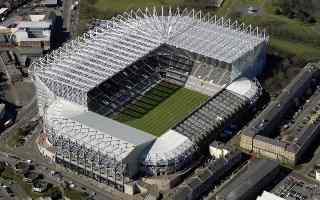
England: Will government introduce new rules on stadium sales?
The government is preparing to grant powers to an independent regulator that will prevent Premier League clubs from selling their stadiums to affiliated companies or third parties.
-
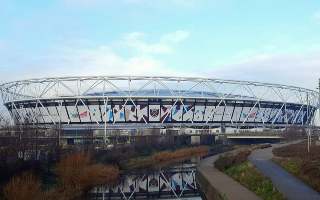
London: The largest photovoltaic installation in Premier League
A £4.35 million upgrade is planned at West Ham's stadium, which will see the installation of photovoltaic panels covering 6,500 m². What benefits will this modern solution bring?
-
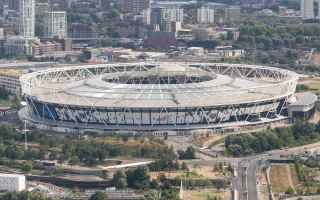
England: Fans oppose ticket prices at London Stadium
As crowds of fans approached London Stadium for the season opener against Aston Villa, a small group handed out flyers in protest against ticket price hikes and the removal of concessionary season tickets in several areas of the stadium.
-
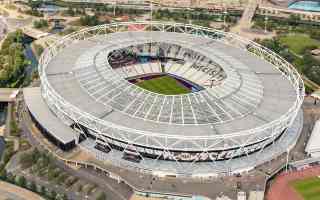
England: What is London Stadium's future? The city's mayor speaks out
The former Olympic Stadium has become a financial burden for the London Legacy Development Corporation (LLDC) due to its long-term contracts resulting in losses. This has led to suggestions that West Ham could take over the venue from LLDC.
-

England: West Ham Fans to boycott season opener? High ticket prices a problem
The inaugural Premier League match of the season between West Ham United and Aston Villa, scheduled for August 17, may face attendance issues due to controversy over ticket prices.
-

England: West Ham close to new London Stadium lease agreement? Property value declines
The departure of London Legacy Development Corporation (LLDC) chairman Lord Peter Hendy and CEO Lyn Garner at the end of this year presents an opportunity for West Ham to begin negotiating a long-term lease for the London Stadium.
-

England: Attendance at Premier League stadiums in the 2023/24 season
Another season, another league title for Manchester City. The award for highest attendance also went to the city of Manchester as well, but to the Red Devils, despite the team's worst season in Premier League history. As many as six clubs surpassed one million spectators this season, with five stadiums filling up at an average of more than 99%. Amazing.
2023
-

England: Will London Stadium be bigger? A new name for the facility is also pending
Wembley and Old Trafford stand out above the rest of England's other football venues in terms of capacity. However, there is speculation that West Ham also have ambitious plans to expand their arena.
-

England: America's Pastimes Makes Moves Towards Permanency in London
The practice of converting sports stadiums temporarily to accommodate other needs is a common practice. Football facilities are often reconfigured for other purposes. This summer MLB returned to London Stadium as the St. Louis Cardinals and Chicago Cubs faced off in a two-game series.
-

England: Long-term benefits connected with West Ham stadium
The London Stadium, where local West Ham currently plays, will undergo changes that will cost just under £5 million. Despite the substantial funds allocated to implement the innovations, the operation is expected to pay for itself within a few years.
2022
-

England: Stadium rises will affect Premier League clubs
The value of almost all 20 stadiums owned by teams playing in the Premier League has recently increased. As a result, clubs will face multi-million pound tax increases involving their infrastructure.
-

United Kingdom: Is football coming home at the Euros?
At a time when most of the chatter is about the World Cup, plans for the next major football events are being clarified. Great Britain and Ireland announced their joint candidacy for hosting Euro 2028 some time ago. A shortlist of stadiums being considered by the federations was also recently announced.
-

London: Search underway for London Stadium naming rights sponsor
2022 marks the 10th anniversary of the opening of the Olympic Stadium in London, which ‘The Hammers’ have played host to since August 2016. London Legacy Development Corporation have just taken the next steps to find a naming rights sponsor for not only the venue, but the the other assets on Olympic Park as well.
-

England: Meet the 2022/23 Premier League stadiums!
Much to the delight of fans, the new English Premier League season will kick off on Friday, August 5. On this occasion, we would like to introduce you to the stadiums where the footballers of the world's best league will soon be playing. Get your English tea in hand and let's get started!

 StadiumDB
StadiumDB